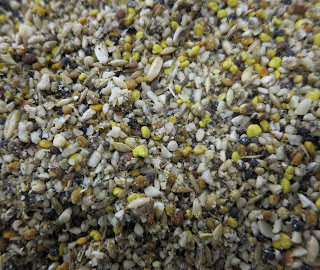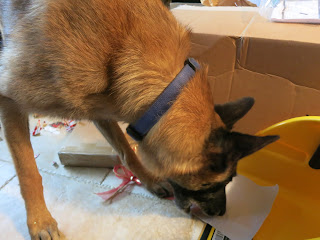I had a very interesting phone call yesterday. The man has a long history of breeding canaries in the past producing several hundred a year, but he had not had any canaries in the last few years. In December, at the National Bird Show, he purchased several pairs each of colorbred, American Singers and German Rollers to get back into his hobby.
But now just a few weeks later, he is perplexed and does not know what to do as some have hatched babies and some he thinks might be molting. What should he do and how can the birds treated the same in the same aviary be responding in such different ways?
The first thing to determine is are some of the birds really molting? Hens normally lose a few small breast feathers when they develop their brood patch so it is best to determine whether they are molting by checking males at this time of year. Males could be in a normal molt or in a soft molt. The difference is whether you see long wing or tail feathers on the cage floor.
Seeing only small feathers would indicate a soft molt which is treated with multiple B vitamins and very low protein diet of oatmeal, canary seed and white bread.
If long wing or tail feathers have been dropped, it means a normal molt is starting and will be obvious in a month and will likely take at least six weeks at best to complete. He looked and did see considerable long feathers on the floor and a few males were even growing new tail feathers so yes, those are molting.
My next question was concerning his lighting. How many hours of lighting are his birds getting. He responded 13.5 of artificial lighting per day and a small night light.
Then I ask him which birds were molting and he said only the colorbred. Some of the others were either setting or had hatched and were feeding babies.
So what happened? They all have been treated exactly the same. Send your comments to this post and hopefully you will be the first to solve this puzzler and have your right answer posted later today. If no correct answers are received, I will post the correct answer tomorrow.
We have a winner! Click on comment to see answer.
Thursday, December 31, 2015
Sunday, December 27, 2015
Mystery: New Birds With Squinting Eyes
Recently, I acquired four new males which I separated into two cages, two in one and two in the other.
Noticing they were very thin, I offered them soft white bread, oatmeal, sunflower chips (pieces) and regular seed mix but no greens.
I noticed when I took them out of the shipping box (air cargo), that the plumage on some looked dull and the eyes were slightly squinting. The shipping box had a sponge with water and an open mouth cage drinker on the side which was empty.
My first thought when seeing them was dehydration due to lack of water during shipping.
I have also seen squinting in inbred birds with neurological problems and when possible test new birds with slight hand stress to see if stress brings on squinting. Sure enough the squinting was worse upon stress. The difference, however, was that these birds were squinting before the test.
I have the typical open mouth cage drinkers in all my cages. With water available, I expected to see the squinting corrected shortly. But to my surprise it didn't.
I kept shaking my head, it had to be dehydration but the cage water drinkers in my cages were full and had never been empty. It also seemed strange that the box contained birds from two breeders and only the ones from one of the two were squinting.
Finally, the light came on when I realized that these birds even though dehydrated, they did not run to the drinkers immediately as I expected them to do. Furthermore, it seemed strange that even though the box contained birds from two breeders and only the ones from one of the two breeders were squinting.
In fact, I had not seen the squinting ones drink at all. But why, if they are dehydrated wouldn't they drink immediately? Are they sick? They are not puffed up with a fever. I have never seen this before!
The reason these birds would not drink from the common open mouth cage drinker is that their breeder used only the ball type drinkers.
I put open dishes of water in the cages and they started drinking and bathing immediately! And shortly thereafter, the squinting disappeared.
Now they are in beautiful condition but I am still watching to see them drink from my open mouth drinkers and in the meantime I am offering open dishes of water too! They must be the cleanest birds in town!
Noticing they were very thin, I offered them soft white bread, oatmeal, sunflower chips (pieces) and regular seed mix but no greens.
I noticed when I took them out of the shipping box (air cargo), that the plumage on some looked dull and the eyes were slightly squinting. The shipping box had a sponge with water and an open mouth cage drinker on the side which was empty.
My first thought when seeing them was dehydration due to lack of water during shipping.
I have also seen squinting in inbred birds with neurological problems and when possible test new birds with slight hand stress to see if stress brings on squinting. Sure enough the squinting was worse upon stress. The difference, however, was that these birds were squinting before the test.
I have the typical open mouth cage drinkers in all my cages. With water available, I expected to see the squinting corrected shortly. But to my surprise it didn't.
I kept shaking my head, it had to be dehydration but the cage water drinkers in my cages were full and had never been empty. It also seemed strange that the box contained birds from two breeders and only the ones from one of the two were squinting.
Finally, the light came on when I realized that these birds even though dehydrated, they did not run to the drinkers immediately as I expected them to do. Furthermore, it seemed strange that even though the box contained birds from two breeders and only the ones from one of the two breeders were squinting.
In fact, I had not seen the squinting ones drink at all. But why, if they are dehydrated wouldn't they drink immediately? Are they sick? They are not puffed up with a fever. I have never seen this before!
The reason these birds would not drink from the common open mouth cage drinker is that their breeder used only the ball type drinkers.
I put open dishes of water in the cages and they started drinking and bathing immediately! And shortly thereafter, the squinting disappeared.
Now they are in beautiful condition but I am still watching to see them drink from my open mouth drinkers and in the meantime I am offering open dishes of water too! They must be the cleanest birds in town!
Friday, December 25, 2015
Egg Free Male Canary Conditioner
Borders in particular are sensitive to high protein levels. Feeding hard boiled egg over a period of time contributes to development of neurological problems. (See article in the blog called Balance Problems). Therefore, it is important not to use any hard boiled egg to condition them.
Feed a small finger egg drawer once a week during January, twice weekly during February and three times a week during March but only to the males since you want to get the males in full breeding condition before the hens!
Basic Recipe Egg Free Conditioner For Male Canaries
4 cups Sunflower Chips (hulled pieces, a great natural source of vitamin E)
4 cups Blatner's Siskin Finch Seed Mix (available in the US from Bird Supply of New Hampshire)
2 cups bee pollen pebbles
1 Tablespoon Wheat Germ
1 Tablespoon Honey
Process in the food processor to mix and blend in the honey.
This recipe can be adjusted to be less stimulating by decreasing the amount of bee pollen to 1 Tablespoon.
Make it more stimulating by increasing the wheat germ and honey to 2 Tablespoons.
My males are crazy about it! Note the singing level and activity 24 hours later.
Happy Holidays!
Thursday, December 24, 2015
Wednesday, December 23, 2015
2015 Florida Canary Fanciers Winners
Armondo Lee selected Border 1st place exhibited by Alfred Vivar Irish Fancy 2nd Place exhibited by Susan Bergel, Fife 3rd place exhibited by Alfred Vivar and Yorshire 4th place exhibited by Mike Corbeil. Congratulations to all the winners!
Tuesday, December 22, 2015
2015 First US Irish Fancy National Florida
 |
| First Place Exhibited by Susan Bergel |
 |
 |
| Second Place Exhibited by Brian Byrne |
 |
| 3rd Place Exhibited by Susan Bergel |
 |
| 4th Place Exhibited by Susan Bergel |
 |
| 5th Place Exhibited by Brian Byrne |
60 Lovely Irish Fancy were exhibited by 4 exhibitors. The club members have generously shared their best stock with each other and therefore there was uniform very good quality and some very close decisions!
The Irish Fancy is a very personable canary and I just had to bring home some breeding stock which I am proudly breeding this season for the very first time!
Monday, December 21, 2015
Sunday, December 20, 2015
2015 National Bird Show Part 1
Winning Border Exhibited by Luis Belchor
Roller Judge, Robert Bennett from Ireland, describing the merits of the winning border for Scannell judging for best bird in show.
Best Old Variety, Lancashire Exhibited by Dr. Max Saedi
Black Red Mosaic Hen Exhibited by Gatto Avaries
Best Columbus Smooth Head Exhibited by Ray Mena
Best Lizard Exhibited by Harold Sodamann
Recessive White
Belgian
Best Stafford
Cobalt
Roller Judge, Robert Bennett from Ireland, describing the merits of the winning border for Scannell judging for best bird in show.
Best Old Variety, Lancashire Exhibited by Dr. Max Saedi
Black Red Mosaic Hen Exhibited by Gatto Avaries
Best Columbus Smooth Head Exhibited by Ray Mena
Best Lizard Exhibited by Harold Sodamann
Recessive White
Belgian
Best Stafford
Cobalt
Friday, December 18, 2015
Alan Timar of Canada Sweeps National Bird Show 2015 German Roller Division
 |
For the second consecutive year, Alan has won both the Canadian and US National Roller Competition!!!
Alan's rollers sang continuously with excellent tempo, unbelievable deep hollow tone and delighted the audience with laughing schockel!!! In my opinion, having attended national and local roller shows since 1982 and being a roller judge, this is the best roller team ever exhibited in the US!!!
Subscribe to:
Comments (Atom)











































